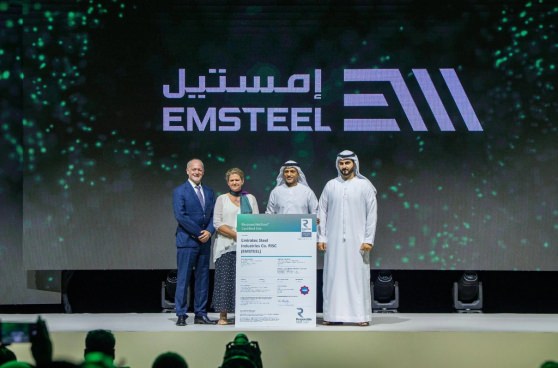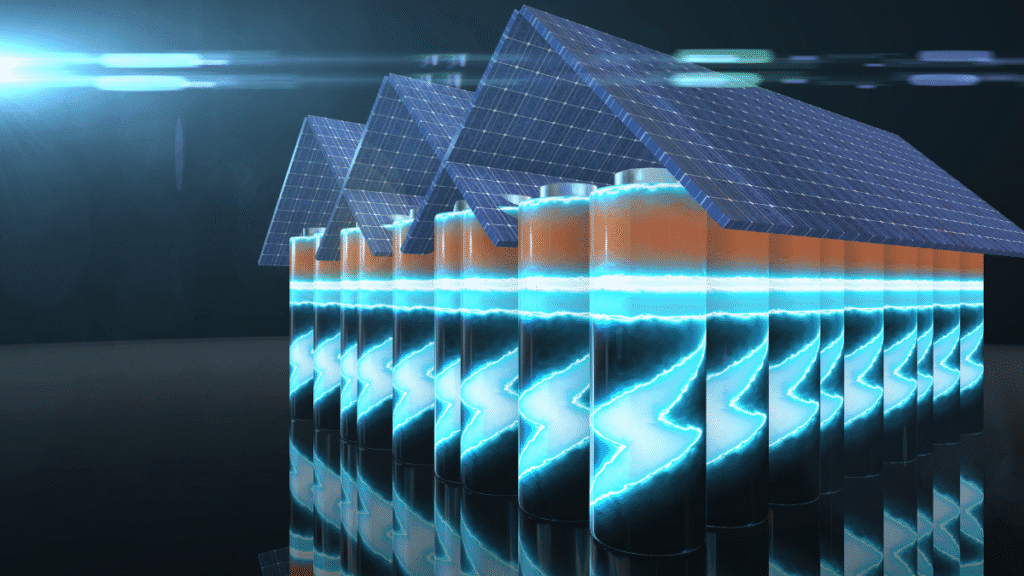The arrival of hydrogen based rebar in Abu Dhabi signals a major step toward a sustainable future in construction. EMSTEEL, a leading steel and building materials firm in the UAE, has delivered this groundbreaking material to help build the nation’s first net zero carbon mosque, an architectural and environmental milestone for the region.
This development is more than an engineering achievement. It is a symbol of progress, faith, and innovation working hand in hand. As the world looks for sustainable solutions to fight climate change, Abu Dhabi’s net zero mosque demonstrates how even sacred spaces can become models of environmental responsibility.
A Landmark for Sustainable Construction
EMSTEEL’s delivery of hydrogen based rebar to the mosque project represents a major advancement in low carbon construction. Traditional rebar, a crucial component in concrete reinforcement, is typically produced using processes that emit large quantities of carbon dioxide.

By contrast, hydrogen based rebar is manufactured using green hydrogen, hydrogen produced through electrolysis powered by renewable energy sources like solar and wind. This clean process eliminates the use of fossil fuels and drastically reduces emissions, creating a rebar that is both strong and sustainable.
For Abu Dhabi, this innovation aligns perfectly with the UAE’s long term sustainability agenda and its target to achieve net zero emissions by 2050. The mosque project thus becomes a national showcase, demonstrating how emerging green technologies can be seamlessly integrated into traditional infrastructure.

Why Hydrogen Based Rebar Matters
Reducing Carbon Emissions
The steel industry is one of the world’s largest sources of industrial emissions, accounting for nearly 7 percent of global carbon dioxide output. Most of that comes from the use of coal and natural gas in the steelmaking process.
Hydrogen based steel production changes the equation entirely. Instead of using carbon as the reducing agent to separate oxygen from iron ore, the process uses hydrogen. The only byproduct is water vapor, not carbon dioxide.
This shift can reduce steelmaking emissions by as much as 90 to 95 percent, making it one of the most promising technologies in the journey toward decarbonized construction.
Maintaining Strength and Reliability
Some might assume that sustainable steel sacrifices strength for environmental benefits, but that is not the case. Hydrogen based rebar offers the same level of strength, ductility, and durability as traditional steel. Rigorous testing and quality certifications ensure it meets international construction standards.
For architects, engineers, and developers, this means they can embrace sustainability without compromising performance. Hydrogen based rebar delivers the same structural integrity with a fraction of the environmental footprint.
A Symbol of Technological Progress
Hydrogen based rebar is not just about materials, it represents a mindset shift. It embodies the transition from high emission industrial processes to smart, renewable powered innovation. It also showcases how the Gulf region, known for its energy resources, is reimagining its future by investing in green hydrogen and sustainable infrastructure.
Inside Abu Dhabi’s First Net Zero Carbon Mosque
The new mosque, located in the Sustainable City development on Yas Island, will be the first in the capital to achieve net zero carbon status. This means that the mosque’s design, construction, and operations will balance all emissions produced, resulting in a net zero carbon footprint.
Blending Faith and Sustainability
The mosque has been designed to accommodate more than 1,300 worshippers across a space of approximately 1,600 square meters. Its architecture combines traditional Islamic aesthetics with modern sustainability principles.
The design emphasizes natural light, airflow, and energy efficiency, ensuring that the building remains both spiritually serene and environmentally friendly.
Eco Friendly Construction Materials
In addition to hydrogen based rebar, the mosque uses a range of eco conscious materials:
- Low carbon concrete mixes that reduce emissions during production
- Recycled aggregates to minimize material waste
- Sustainable interior finishes that lower volatile organic compounds
These material choices help lower the project’s embodied carbon, the total emissions produced through all construction stages.
Energy Efficiency at Its Core
Energy conservation is a cornerstone of the mosque’s design. Solar panels installed on the roof will generate renewable electricity to power lighting, air conditioning, and other systems. Smart controls and high efficiency lighting will minimize energy consumption.
Passive design techniques, such as strategic building orientation and natural ventilation, further reduce the need for mechanical cooling.
Water Sustainability
The mosque will also employ advanced water recycling systems. Greywater from ablution areas will be treated and reused for landscaping and toilet flushing, significantly cutting down on water consumption. In a region where water scarcity is a concern, this initiative sets an important example for responsible resource management.
Community and Cultural Impact
Beyond its environmental impact, the mosque is also a cultural statement. It embodies the values of stewardship and responsibility, encouraging communities to think of environmental protection as a form of care for creation.
EMSTEEL’s Commitment to Decarbonization
For EMSTEEL, this project is part of a larger mission to transform the steel industry through innovation and sustainability. The company has been investing heavily in green steel technologies and hydrogen based production methods.
By establishing a supply chain for hydrogen based rebar in the Middle East, EMSTEEL is reducing its own emissions while enabling other developers, architects, and contractors to access low carbon construction materials.
The long term goal is to scale production of hydrogen based steel, making it more widely available and cost effective for future projects, from residential buildings to major infrastructure developments.

Hydrogen Steel The Science Behind the Innovation
How It Works
Traditional steel production relies on a blast furnace, where iron ore is combined with coke, a derivative of coal, to extract pure iron. The chemical reaction releases carbon dioxide as a byproduct.
In hydrogen based production, hydrogen gas is used to reduce the iron ore. When hydrogen reacts with oxygen, it forms water vapor instead of carbon dioxide. The resulting direct reduced iron is then melted in an electric arc furnace powered by renewable energy.
Green Hydrogen The Key Ingredient
The hydrogen used in this process is generated through electrolysis, splitting water into hydrogen and oxygen using electricity. When the electricity comes from renewable sources like solar or wind power, the hydrogen is considered green.
This ensures that the entire steel production chain remains clean, from the energy source to the final product.
Scaling Up for the Future
While hydrogen based steelmaking is still emerging, projects like this mosque prove that it is no longer just a concept, it is a reality. As technology advances and renewable hydrogen becomes more affordable, production will expand, bringing costs down and availability up.
Challenges and Opportunities
High Production Costs
Currently, hydrogen based rebar is more expensive than traditional rebar due to the cost of green hydrogen and the limited number of facilities capable of producing it. However, as renewable energy becomes cheaper and more abundant, these costs are expected to decline dramatically.
Infrastructure and Supply Chain
Widespread adoption of hydrogen steel requires a robust hydrogen supply network, including production, storage, and transportation infrastructure. The UAE is investing heavily in hydrogen ecosystems, and the success of projects like this mosque could accelerate further development.
Market Readiness
Another challenge lies in market perception. Builders, contractors, and developers may be hesitant to adopt new materials without clear proof of performance and cost efficiency. Demonstration projects like this mosque show that sustainable materials can perform just as well, or even better, than conventional ones.
The UAE’s Green Vision
The UAE’s leadership has long emphasized sustainability as a national priority. Initiatives such as the UAE Net Zero by 2050 strategic plan reflect the country’s commitment to global climate goals.
In this context, the construction of the first net zero mosque is part of a broader transformation. It represents how the UAE is diversifying its economy, investing in innovation, and leading the Middle East’s transition to a low carbon future.
The government’s focus on green hydrogen production is particularly relevant. With abundant solar resources and world class infrastructure, the UAE has the potential to become a major hub for hydrogen exports and sustainable industrial materials.
Religious Architecture Meets Renewable Innovation
Faith based architecture has always been symbolic. Mosques, churches, and temples are not just buildings, they are reflections of human values, beliefs, and aspirations.
By incorporating hydrogen based rebar into a mosque, Abu Dhabi sends a powerful message: environmental responsibility is not just a scientific necessity, it is a moral and spiritual duty.
This connection between faith and sustainability aligns with the Islamic principle of stewardship of Earth, encouraging future generations to protect natural resources.
As a result, this mosque is likely to inspire similar projects across the Muslim world, where green architecture can merge tradition with innovation.

The Future of Green Construction
The introduction of hydrogen based rebar opens the door to a new era of eco friendly construction materials. In the coming years, several trends are expected to emerge:
- Green steel becomes standard in infrastructure and real estate projects
- Circular construction where buildings are designed for recycling and disassembly
- Smart building systems using energy monitoring and AI to reduce operational emissions
- Carbon accounting to measure and track emissions in construction materials
These changes will redefine what green buildings mean, shifting sustainability from an optional feature to a core expectation.
A Blueprint for Global Change
Abu Dhabi’s net zero mosque sets a precedent for the UAE and the global construction industry. It proves that innovation can redefine entire sectors.
The use of hydrogen based rebar is a tangible example of how clean technology can integrate with culture, faith, and tradition without compromise. It bridges the gap between the old and the new, showing that progress can respect heritage while embracing the future.
More importantly, it invites policymakers, developers, and manufacturers to collaborate across industries, combining science, faith, and design for a shared vision of sustainability.
Conclusion
The story of hydrogen based rebar and Abu Dhabi’s net zero mosque is a story of hope and transformation. It shows how innovation can serve both people and the planet, creating structures that are strong in both form and principle.
By leading with courage and creativity, EMSTEEL and its partners have proven that sustainability is achievable today. The mosque stands as a beacon of what is possible when technology, tradition, and environmental awareness come together.
As the UAE continues its journey toward a carbon free future, this project reminds the world that faith in innovation can build the foundations of a greener, more sustainable tomorrow.
Do follow UAE Stories on Instagram
Read Next – Trade247 Human Support Empowers Global Traders














